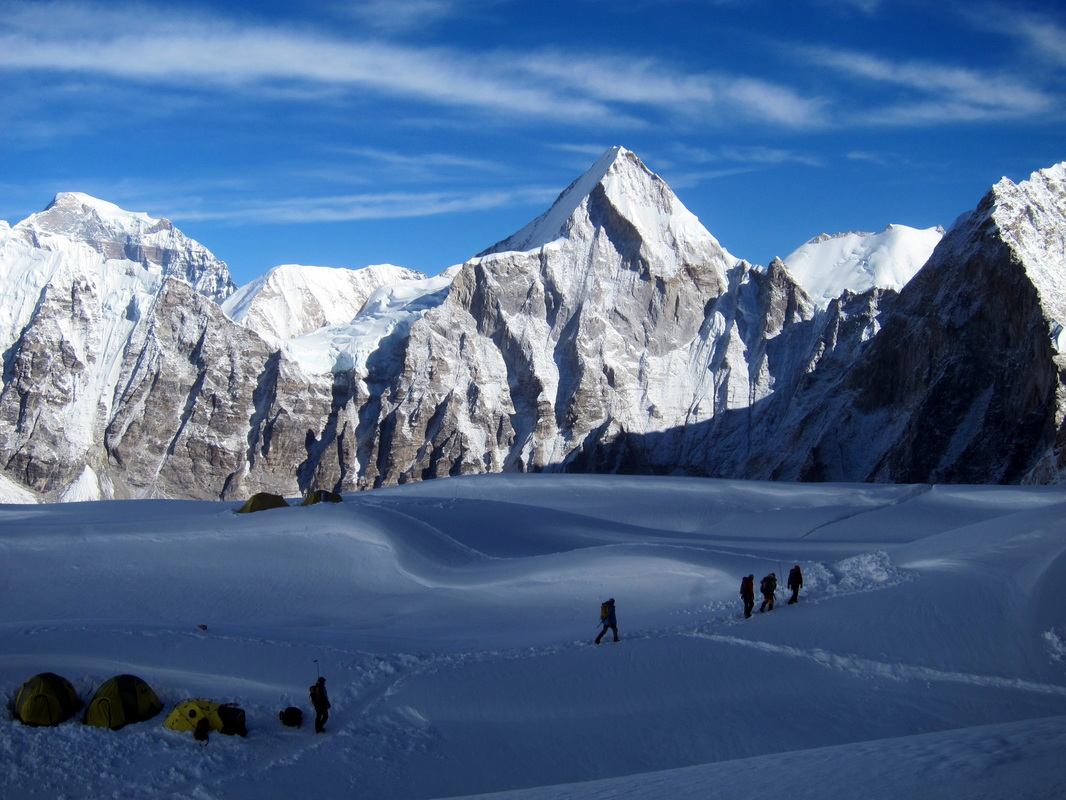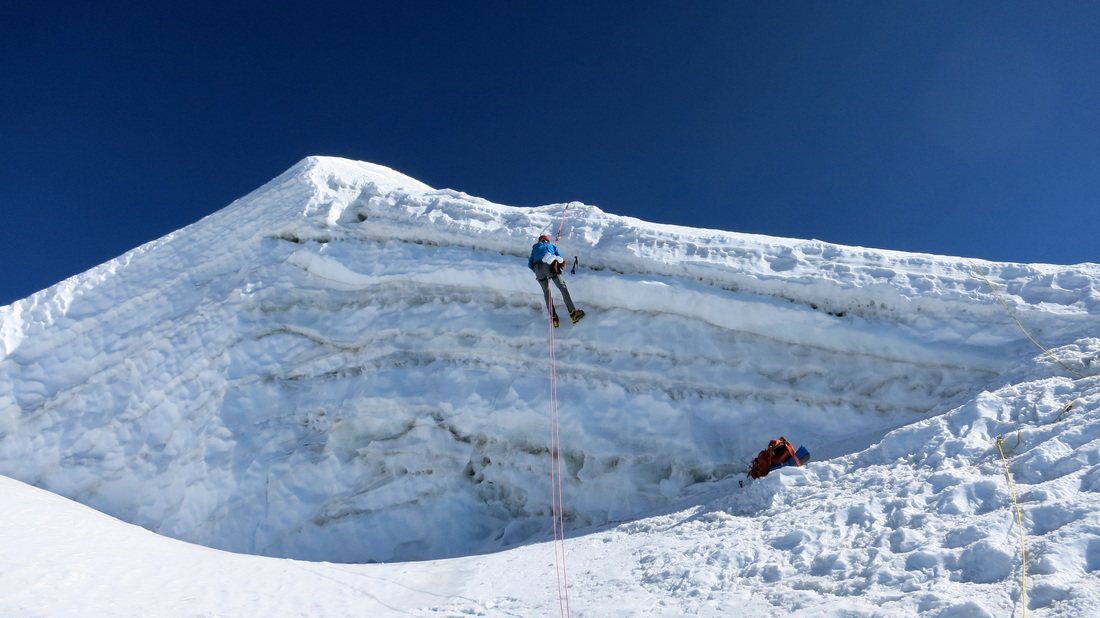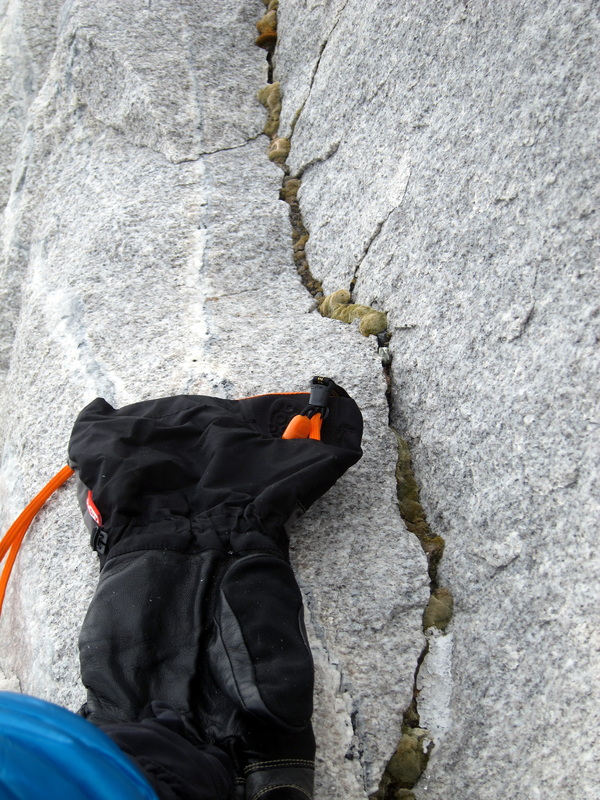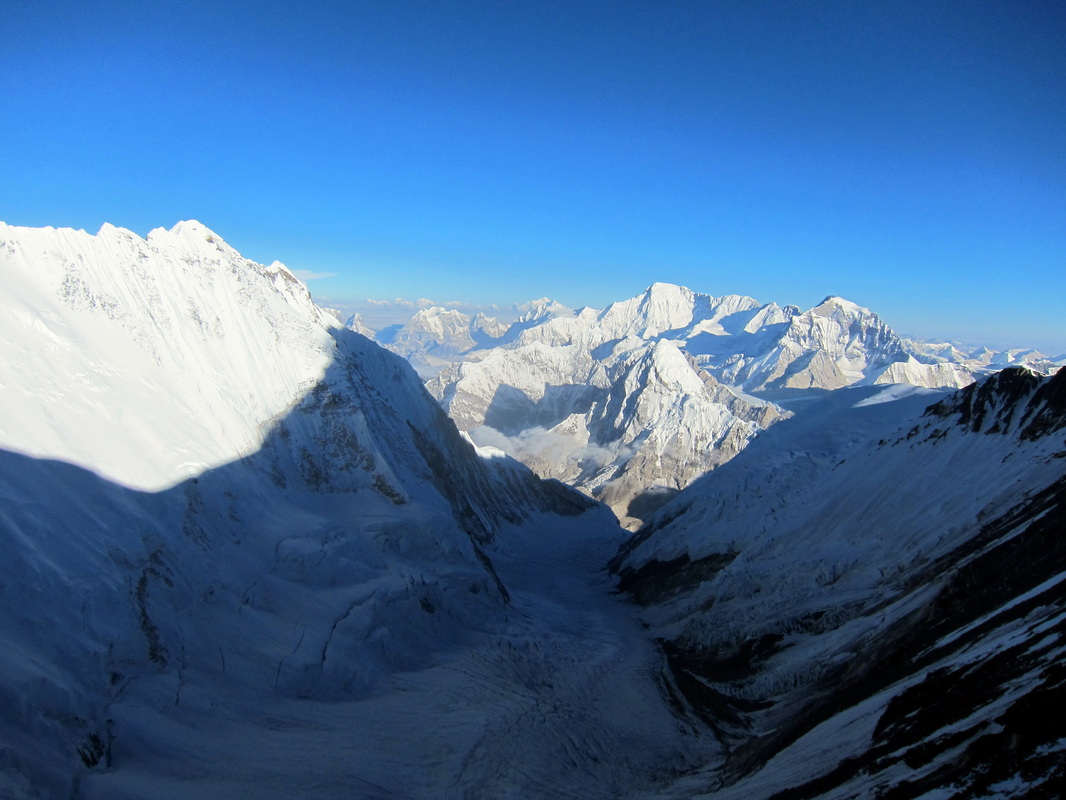Climate Science from the Roof of the World: Hari Mix’s spring collecting data for ASC in the Himalaya
Hari Mix is a PhD Candidate at Stanford University and is climbing in the Himalaya as part of a team of researchers,TripleED, who are studying decision making in high altitude environments. Hari is collecting snow samples and lichen for two ASC projects while attempting to summit Lhotse and East Lobuche.

Climbers descend from camp one, Mount Everest. Photo credit: Hari Mix
From Hari:
It all started with a coffee shop conversation…”Well, we’re looking to go to Everest this spring.” A few minutes later, I sort of needed to pinch myself back to reality, “Umm, you want me to go climbing?” As an earth scientist nearing the end of my PhD in Environmental Earth System Science at Stanford, I’ve been extremely lucky to travel for my degree. My research, which focuses on the evolution of topography, ecosystems and climate over the past 65 million years has taken me all over western North America and to Mongolia twice. But I’d just been offered the opportunity to climb Lhotse, the world’s fourth highest mountain, as a researcher with on a project studying the organizational behavior of commercial mountaineering expeditions. The Extreme Environments – Everyday Decisions (www.tripleed.com) research project focuses on how organizations operate in environments where the wrong decision endangers lives. As the high altitude member of our team, I spent the spring climbing embedded with a commercial Everest operation before making a summit attempt on nearby Lhotse without supplemental oxygen.

Hari collects snow samples on rappel near the summit of Lobuche East, 20,000ft, Khumbu region, Nepal. Photo credit: Hari Mix
I’ve always been fascinated with the magnitude, beauty and balance of earth processes. This manifested most obviously in an obsession with big mountains that began when I encountered the Canadian Rockies as a child. So when I learned of Adventurers and Scientists for Conservation a year ago, it was a natural step for me. Passion for nature and stewardship of our wild places are inextricably linked. ASC plays a critical role as a matchmaker between scientists who desperately need data to better understand and monitor the natural world and those who love it most.
Adventurers looking for a way to add learning and a sense of meaning to their trips need look no further—ASC’s helpful staff will make real scientific work an easy and integrated component of your next expedition.

Collecting one of the highest plants ever found, 22,000ft, Everest. Photo credit: Hari Mix
That doesn’t mean collecting data in extreme environments will be easy—in my case, it meant hauling 15 1L Nalgene bottles up to an elevation as high as Denali, then rappelling off the lip of a crevasse at 20,000ft. As a participant in a project led by Natalie Kehrwald, I was tasked with collecting a time series of snow samples in order to track the history of dust deposition from the Indian subcontinent on high Himalayan glaciers. For another of Natalie’s projects, I fought through the pain of freezing fingers and willed myself to remove my down mitts just after dawn at Everest’s camp three (23,000ft) to collect a set of
snow samples spanning a range of elevations on the classic Everest route. And possibly most interestingly, I managed to track down one of the
highest plants in the world—a moss growing in a small granite crack near camp two (22,000ft) and collect a sample for a group of scientists studying symbiotic relationships at high altitudes.

The view from high on Lhotse. From the upper reaches of the peak, one can see the curvature of the Earth. Cho Oyu, the world’s 6th highest mountain, is in the center. Photo credit: Hari Mix
In late may, I made a summit attempt on Lhotse, and managed to make it to camp four without supplemental oxygen. Despite feeling physically strong and headache-free at 7850m (25,700ft), high winds and snow thwarted my summit attempt. Nonetheless, it was a magical trip and great learning experience. Thanks again to ASC everyone who supported my expedition!
To catch up on Hari’s expedition and for more pictures and stories, visit his blog: www.hmix.org.




